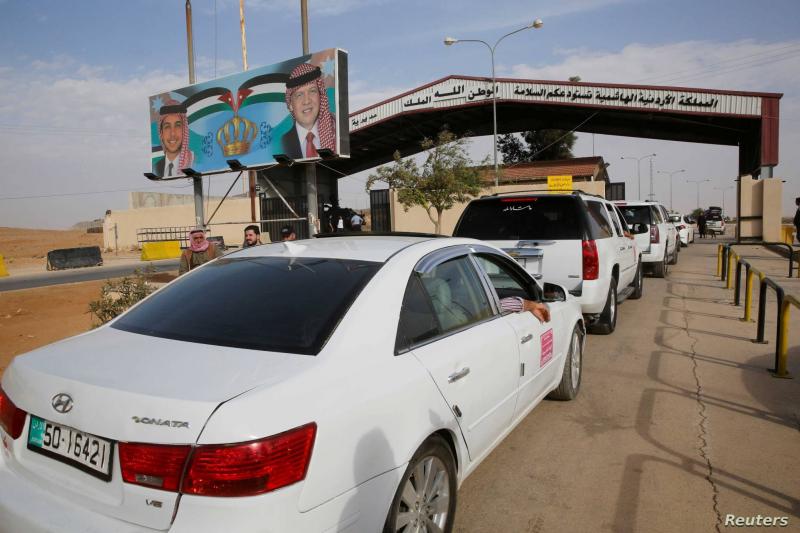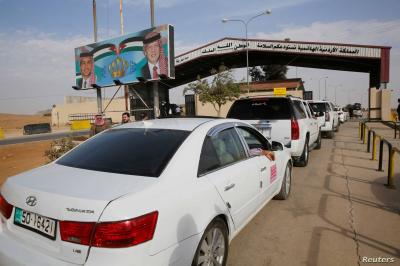A "secret document" from Jordan proposes a new approach to dealing with Damascus, breaking away from the past ten years and the policy of "regime change" in Syria. It outlines steps aimed at "gradually changing the regime's behavior," culminating in the "withdrawal of all foreign forces" that entered Syria after 2011, while acknowledging Russia's "legitimate interests" in the country. A senior Western official familiar with the document indicated that it was discussed recently among Arab leaders, including Jordan's King Abdullah II and U.S. President Joe Biden in Washington in July, and Russian President Vladimir Putin in August, alongside the Baghdad summit at the end of August. He noted that some recent normalization steps "touch on this new approach or are inspired by its spirit."
The official stated that recent Jordanian movements are based on these ideas, as Amman received U.S. support for extending the Arab Gas Pipeline through Syrian territory from Egypt and Jordan to Lebanon, with promises of written guarantees exempting it from the "Caesar Act" sanctions imposed on Damascus, plus financial support from the World Bank to rehabilitate the pipeline in southern Syria. In contrast, Russia has led efforts to impose settlements in Dara'a and its countryside that do not involve the displacement of civilians to Jordan, potentially curbing Iranian influence, coinciding with the opening of borders between Amman and Damascus and exchanges of high-level military, security, and economic visits.
On the sidelines of the UN General Assembly, the level of communication with Syrian Foreign Minister Faisal Mekdad increased, including meetings with his Egyptian counterpart Sameh Shukri, Jordan's Ayman Safadi, and Tunisia's Othman Jerandi, while interactions with the delegation of the Syrian opposition "Negotiation Commission" in New York were minimal or nonexistent. The Arab consensus for Syria's return to the Arab League, suspended since the end of 2012, remains absent. Arab countries link it to the availability of consensus and Syria taking steps to implement a political solution according to resolution 2254, which maintains its unity and expels foreign militias.
### Multiple Failures
According to the Western official, the document starts from an assessment that the approach to the Syrian crisis over the past ten years has ended in "failure" in all aspects concerning Syrians, geopolitics, and terrorism. There are currently 6.7 million Syrian refugees, 6.6 million internally displaced persons, and 13 million in need of humanitarian assistance. Furthermore, 80% of Syrians live below the poverty line, and 2.5 million children are out of school. Regarding ISIS, while it was geographically defeated in March 2019, the organization is "re-emerging" in various areas of Syria, including the Badia and southeastern parts near the Jordanian border.
The official noted that the document also addressed the Iranian presence, concluding that Tehran enjoys increasing military and economic influence over the regime and various regions of the country, particularly southwestern Syria, where drug trafficking thrives, constituting "a primary source of funding for Iranian militias, posing a threat to the region and beyond."
### New Approach
Thus, the document proposes a new, impactful approach to refocus on the political solution in Syria according to the international resolution 2254 and address the humanitarian crisis and its security repercussions in Syria and its neighbors, based on a series of cumulative steps concentrating on "fighting terrorism and containing Iran's rising influence." The goal of this approach is "to gradually change the regime's behavior," in exchange for incentives positively affecting the Syrian people and facilitating the return of refugees and displaced persons, according to the Western official.
The ideas in this "document" are similar to the proposal of UN envoy Geir Pedersen to adopt a "step-by-step" approach, beginning with a U.S.-Russian understanding, defining and specifying these steps, and gaining regional, Arab, and European support for them before forming a clear mechanism for "the regime's engagement" before initiating implementation. The Western official mentioned that securing Russian support for this approach is essential, along with recognizing Russia's legitimate interests, then collaborating with it to determine common ground in hopes of moving forward toward a political solution and implementing international resolution 2254.
There was an expectation that dialogues between the envoys of Presidents Biden and Putin in Geneva, which so far have included two rounds in early July and mid-September, would provide a framework for a "step-by-step" approach, after both sides agreed to draft a joint resolution for extending humanitarian assistance "across borders" and "across lines."
### Implementation Map
Among the obstacles to this approach are divisions over "engaging with the regime," the lack of Arab consensus regarding Damascus's return to the Arab League, and no progress on the political solution according to resolution 2254, in addition to the U.S. and European countries' adherence to three pressure tools: sanctions, isolation, and reconstruction funding. There is also a legal U.S. obstacle represented by the "Caesar Act," passed by Congress with bipartisan support.
Thus, one proposal is for Jordan to currently undertake "preliminary engagement" with Damascus before expanding these communications. Experts and senior officials involved with this "document" are formulating an executive map for the "step-by-step" approach, including proposed files and the required stance from Damascus regarding "changing the regime's behavior" concerning the peace process, resolution 2254, the constitutional committee, the role of Iran, and the return of refugees and displaced persons, along with the "offers" made by other parties concerning normalization and political and diplomatic engagement, sanctions exceptions, funding for infrastructure, and joint cooperation against terrorism.
Among the proposals is that the initial demand be "the withdrawal of all non-Syrian elements from the contact lines," followed by "the withdrawal of all foreign forces that entered after 2011," in exchange for the withdrawal of U.S. forces and dismantling the Tanf base on the Syrian-Jordanian-Iraqi border, and opening channels for coordination between the Syrian army and security forces, and their counterparts in neighboring countries to ensure border security.
This implementation map does not include a clear timeline for execution, nor does it specify the position on the Russian military presence in Syria which began at the end of 2015, although it mentions "its legitimate interests." It also does not address the Syrian government's claim that the presence of Iran and militias was at the request of the Syrian government, according to the Western official.




